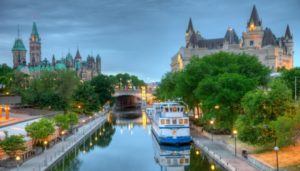Economic environment
South Africa has abundant natural resources, and mining is a major—although waning—source of foreign exchange. The services sector has fueled growth over the last decade and now accounts for 70% of the country’s gross domestic product.
Weak domestic demand led to growth of just 0.3% in 2016, South Africa’s worst performance since 2009. Economists expect improvement this year, predicting expansion of 1% this year and 2% by 2019, because of moderating inflation, rising commodity prices and increased agricultural output. But ongoing political uncertainty could dampen prospects for business investment and economic improvements.
Travel
International travel grew by less than 2% per year between 2010 and 2016. While arrivals increased 4% annually, departures from South Africa declined by 2.5% per year over this period. Total travel growth will accelerate to 6% per year through 2020, with the number of arriving and departing travelers increasing at a similar rate, according to forecasts by Oxford Economics.
South Africa and its six bordering neighbor countries together account for 69% of inbound and 62% of outbound trips. The United Kingdom is South Africa’s largest long-haul travel market, but the U.S. is an increasingly important source of inbound tourism.
Businesses spent US$9 billion on travel in 2016. Domestic trips accounted for 58% of all spending. Between 2010 and 2016, total spending grew, on average, by 8% per year. Industry economists anticipate this rate of growth will continue through 2020, but with a shift: International travel will replace domestic trips as the main source of expansion.
Air
Government-owned South African Airways (SAA), regional airline SA Express and low-cost carrier Mango together operate at least half the flights departing from South Africa’s six busiest airports. Financial difficulties could lead to the restructuring and merger of these three airlines. The main competitor is Comair, which operates franchised flights for British Airways and low-cost services under the Kulula brand. FlySafair gives domestic travelers a third low-cost option, and it soon may be joined by low-cost carrier FastJet, which is setting up in in the country.
Amid these expansions, over capacity already is affecting the South African air market. Domestic passengers increased 6% in 2016, but available seats rose by 12%. This competitive environment makes it harder for airlines to increase fares, especially as the sluggish economy weakens demand.
Accommodation
The country’s largest chain is Tsogo Sun, which has more than 80 hotels. Its portfolio covers luxury, full-service, select-service and budget brands. Marriott is firmly established as the second-largest chain after a 2014 acquisition of Protea expanded its portfolio to 74 hotels. Through Protea, Marriott offers accommodation in more than 30 cities across all nine South African provinces. While most properties are upper midscale, the portfolio includes 11 upper upscale hotels, mainly operating under Protea’s African Pride sub-brand.
Best Western, Carlson Rezidor and IHG also have a presence in the country, but each of the international chains operates fewer than 10 properties. Smaller local chains like Peermont Hotels, Newmark Hotels and BON Hotels offer alternative accommodations in some key cities.
![]() BCD Travel’s Research & Intelligence experts translate the trends driving international business growth in new markets. Talk to your account manager about how BCD Travel can support your company’s growth and get your travelers where they need to be across the globe.
BCD Travel’s Research & Intelligence experts translate the trends driving international business growth in new markets. Talk to your account manager about how BCD Travel can support your company’s growth and get your travelers where they need to be across the globe.

